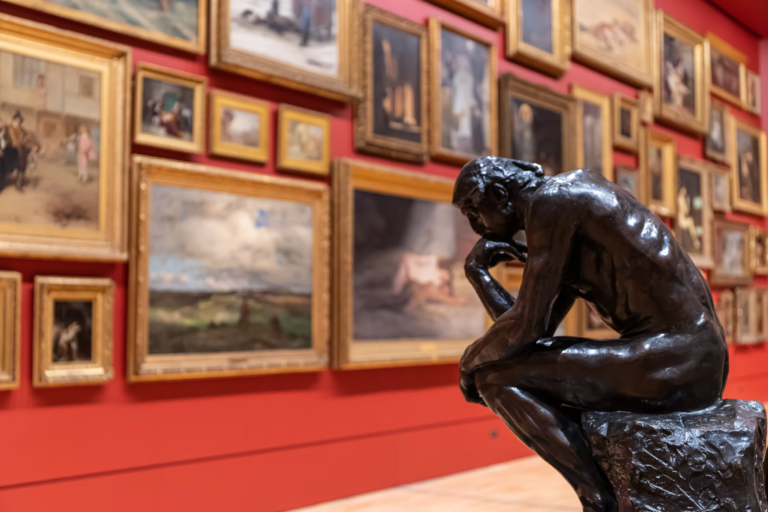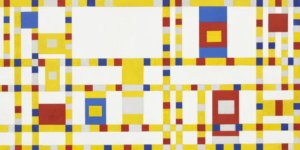Too many people put off creating their wills because planning for our death feels like we’re anticipating it or, worse, welcoming it. Thinking about our mortality can be unsettling, and talking about it with our loved ones can be uncomfortable and even traumatizing. However, avoiding the topic does not make death go away or any less preventable.
We all leave something behind when we die. For artists, it’s said that you leave two bodies when you pass away, your physical body and your body of work. Over the course of your career, you will likely accumulate dozens, or for many, hundreds or thousands of your works during your career and lifespan. You may feel that when you die, you can simply leave all your artwork behind with your family, and they can do with it as they please.
But what if you want to leave a legacy, one that not only your loved ones benefit from but also your supporters? Or what if you want to leave your work with someone specific, such as your muse, a charity, or your alma mater?
It’s for these reasons that every artist, whether you are at the start of your career or have retired, should start planning your will and the future for your art estate now.
Why You Need a Will as an Artist
Without a valid will, the state in which you live may classify you as “interstate” and govern the distribution of your assets. Typically, the disposition of your property begins with your spouse and children, followed by your parents and siblings. This is fine for the artist who trusts their immediate family with their legacy and is confident they will know how to manage your reputation long after you’re gone. But what if your immediate family has not been involved in your process, artistic journey, or career? Would they be able to give your life’s work the respect it deserves or promote it in a way that honors your legacy?
Without art estate planning in place, your works may not only end up in the wrong hands but also become a legal and financial burden that you leave behind to your surviving family. Even if you only have a handful of art assets, not planning who will legally own them after your passing can become the source of conflict for anybody claiming ownership rights. When you leave a will with a carefully articulated estate plan for your art, not only will you be minimizing the risk of dispute between the people you leave behind, but you also give explicit instructions on how you want your body of work treated and presented.

What is Art Estate Planning?
Your will is the legal document declaring how to distribute your property after your death, and your art estate plan makes up the specific instructions on how to dispose of your art and related assets. Your art estate plan covers how you want your art to be dispersed, preserved, stored, or presented. It can be detailed to cover your long-term goals for your art or be as simple as declaring that you’re donating your entire body of work to charity or a school. Your art estate plan may even be instructions to sell all your artwork to produce income for the person who inherits all your work.
Because an art estate plan is a legally binding document, you should establish one with a lawyer and consultants. Find someone you can trust and that understands the complexities of the art world, particularly when it comes to both tangible and intangible assets. And if you are to choose an executor to sell your assets after your death, they should also know how to execute your wishes and handle any potential conflicting claims that may arise, including disputes with gallery owners, collaborators, or agents you may have worked with. While anyone can be assigned as executor, most artists choose their lawyer over their family member, agent, dealer, or accountant.
Art Estate Planning Checklist
Younger artists think they have time. Older artists wish they knew then what they know now. Wherever you are in your art journey and career, whether you are an aspiring professional digital artist or an established and sought-after sculptor, you should be planning your art estate and defining the legacy you want to leave behind. Here is a checklist of what you should include in your art estate planning:
Take census of your art
It’s never too early to start organizing and documenting your art. Catalogue and itemize every piece of work you’ve created by creating an art inventory. The inventory should include descriptive information about each work, including titles, dimensions, mediums, and dates they were created. You can create sub-lists for works that are in progress or decidedly left unfinished. The information may need to be updated regularly, particularly if you have work that is not in your studio or storage and may be on consignment or part of a private collection.

Include materials chronicling your career
Your art estate covers more than just your physical work; it can include intangible assets, such as ideas that you may have documented in your journals or performances you may have captured on video. Other materials representing your accomplishments and should be included in your art estate are critic reviews, newspaper clippings, letters, and photographs. You should also include contracts and records for intellectual property, such as copyrights and trademarks.
Don’t forget your digital assets
If you have a website, art stored in the cloud, social media, or an online portfolio, your art estate plan should include who can have access to your accounts. More importantly, your art estate plan should provide explicit instructions on how those platforms should be managed or maintained after you pass. For example, you may want your homepage to share an announcement of your passing, or you may want your social channels to be deleted. This may include a document with your login credentials to your cloud storage, social media accounts, domain host, content management system, and other platforms where you store or share your art. In the event that the person left in charge of your online channels and digital data encounters problems with platform administrators, educate yourself on the specific policies these platforms enforce in the event an account owner dies.
Backup your files
The traditional way to chronicle your assets would be to write down the details in a physical logbook. Depending on the art you produce, documentation may include photos or Polaroids of your work. All of this can be placed in a box and kept in a safe or storage. However, paper and photographs can degrade over time. Therefore, art estate planning should also involve a contingency plan in the event something happens to these physical records. Alternatively, you can start with digital documentation of your works and keep physical copies as backups.
At ARTDEX, we know the importance of archiving your art and updating your artwork archive regularly, especially for the purpose of estate planning. ARTDEX is an easy-to-use online art management program and free digital art archive for your art portfolios. The art management aspect of ARTDEX is crucial to individual artists who don’t have the resources to spend thousands of dollars on traditional art inventory management programs.
As mentioned above, archiving your artwork is crucial and goes beyond simple preservation. Leaving behind a legacy and an archive of works to prove may become an inspiration source for the next artist and, more importantly, serve as images of memorabilia for your closest loved ones.
Click here to discover how you can document and conveniently archive your art while also connecting with other artists and galleries you admire.


![[Left] Kusama with her piece Dots Obsession, 2012, via AWARE, [Right] Yayoi Kusama (Courtesy Whitney Museum of American Art) | Source: thecollector.com](https://www.artdex.com/wp-content/uploads/2024/04/Left-Kusama-with-her-piece-Dots-Obsession-2012-via-AWARE-Right-Yayoi-Kusama-Courtesy-Whitney-Museum-of-American-Art-Source-thecollector.com--300x172.png)




